Hex ezCAN II
Does the prospect of tapping into your sophisticated motorcycle’s CAN bus electrical system strike fear in your heart? Are you unsure what CAN bus even means? Would you rather not have to learn? If you answered “yes” to all three of these questions, yet still want to add electrical accessories to your modern machine, South African company Hex Microsystems (Hex Innovate in the UK) has just what you need. (Yes, this is the same company that brought us the gold standard in on-board diagnostics—the almighty GS-911.)
The ezCAN II (second generation) is an easily installed plug-and-play device, sometimes called a “CAN opener,” that gets inserted in-line with one of your CAN bus modules and then manages up to four add-ons without disturbing the OEM electronics or throwing fault codes. It not only allows seamless integration of accessories, but also provides an extensive set of options for setting up each one, using a USB link to software on your Mac or PC laptop, all without impact to your manufacturer’s warranty. The ezCAN II also allows for some diagnostic assessments of your accessory circuitry.
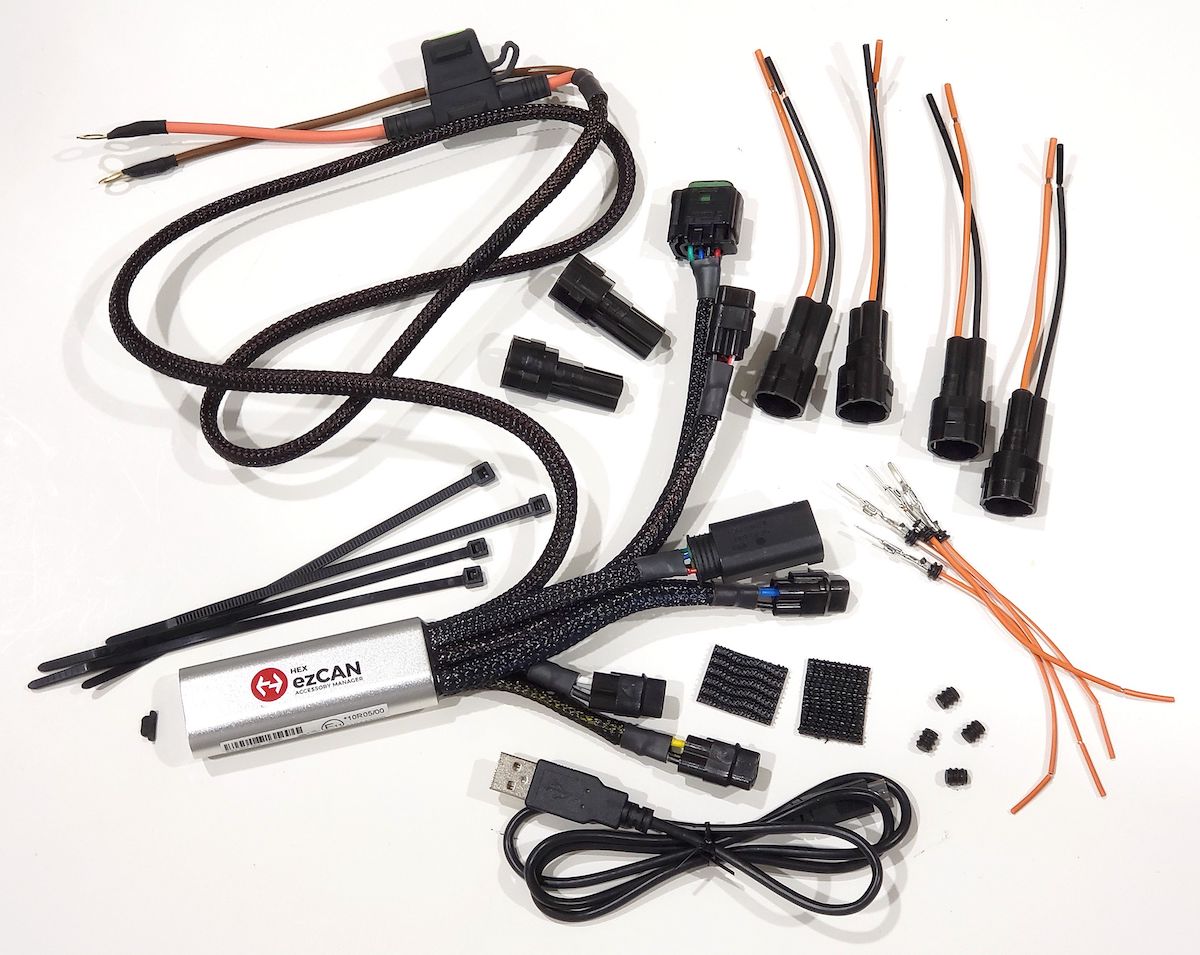
Physically, there’s not much to it. Leads run to your bike’s battery terminals and the ezCAN II’s small body gets secured under the seat with Velcro. For BMWs, depending on your model, the ezCAN II slips in between the main wiring harness and either your RDC (tire pressure monitor) or DWA (anti-theft alarm system) module, which reside in the tail section or under-seat area. This is accomplished with a simple pair of plugs, no more challenging than using an extension cord for a lamp. Now you can program any/all of the four accessory circuits and hook up your farkles with tidy plugs.
Four male color-coded accessory connections (16AWG wiring) extend from the end of the ezCan II, along with the fused power leads and the two plugs used for integration with the OEM wiring harness. Each of these is wrapped in heavy-duty braided insulation; apparent production quality is definitely premium level. Four female plugs are included with a hot and ground wire already in place; these are ready to serve as the new ends for your accessories’ power leads. If an accessory requires a third wire (e.g., to supply an operational signal), one of four loose wires (18AWG) already outfitted with intra-plug blade connectors can be added to the junction. Once the female plug is spliced as the terminus of your accessory’s wiring, it’s simply connected to the appropriate male plug on the ezCAN II. The circuits for those plugs are each programed to operate the accessory designated for them in the ezCAN II software during the installation process, or at any time afterward if you decide to swap out an accessory or change the behavior of one already installed. Even the physical plugs can be reconfigured, since the third wire is interchangeable with a tiny rubber seal and there’s plenty of wire length to allow future cutting and reconnecting the plugs to new accessories. The ezCAN II is dustproof and waterproof, and four small zip-ties are supplied to keep routed wires neatly in place. Two female blanking plugs are included to seal off unused male plugs.
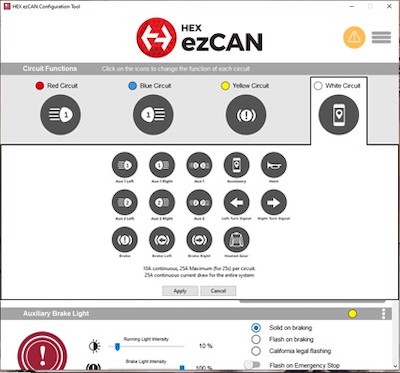
After installing any updates and registering your ezCAN II, the software allows selection from an assortment of accessory categories for each of the four circuits, including auxiliary lights, turn signals, brake lights, horns, heated gear, or unspecified electronics, such as a GPS unit, dash-cam, or SAE power plug. Left and right lights can be configured to work separately or together. Each circuit has an electronic “fuse,” meaning it will be disconnected if its amperage draw exceeds a preset limit; they’re all reconnected whenever the ignition is switched off and on. Each of these circuit breakers can be set independently to trip at most anywhere from 1-25 amps, with maximums of 10A continuous draw and 25A peak draw (for up to 25 seconds). The total continuous draw for the entire system is capped at 25A, so pay attention to the power requirements of the accessories you plan to attach.
Note: First generation ezCANs were black instead of silver and had only two 10A continuous/25A peak circuits, with the other two circuits limited to 4A (continuous); they also had provisions for just one set of auxiliary lights, instead of the latest version’s two.
With fuse settings and accessory types chosen, each circuit displays an array of options appropriate for its accessory. For example, auxiliary brake lights can be programed to operate “solid on” or flash (including a California-legal version) when the brakes are applied, and also during rapid deceleration due to engine braking, if desired; even the sensitivity to deceleration can be adjusted. Their intensity in running light mode can be adjusted separately from their intensity in brake light mode. Among the numerous settings available for auxiliary running lights are independently adjustable daytime and nighttime brightness in separate high-beam and low-beam modes, several options for flashing, and the ability to set a variable delay to coordinate strobing with horn activation. Heated gear can be activated and regulated with a bike’s heated grip control. Unspecified accessories receive power when the ignition is switched on and can be set to remain powered for up to a minute after the ignition has been turned off. Some settings are not visible on the main screen and must be accessed using simple submenus, but everything is reasonably intuitive.
Although the ezCAN II’s installation is straightforward and well within the capabilities of virtually any home mechanic, finding the best path for wires on a modern motorcycle can present some challenge. Pulling apart bodywork on a BMW is sometimes a decent into Fastener Hell, and those Germans know how to pack every crack and crevice so tightly there’s no room left to thread cables—none of which is Hex’s fault! Nevertheless, I was (eventually) able to route the power leads discretely after removing some tail-section plastic and zip-tying the leads inboard of several frame rails on their way to the battery compartment. While the ezCAN II’s body is quite compact, the seven heavily insulated cables extending from it are stiff and bulky, and their plugs are large; count on losing a substantial portion of your under-seat storage volume, which may already be minimal.
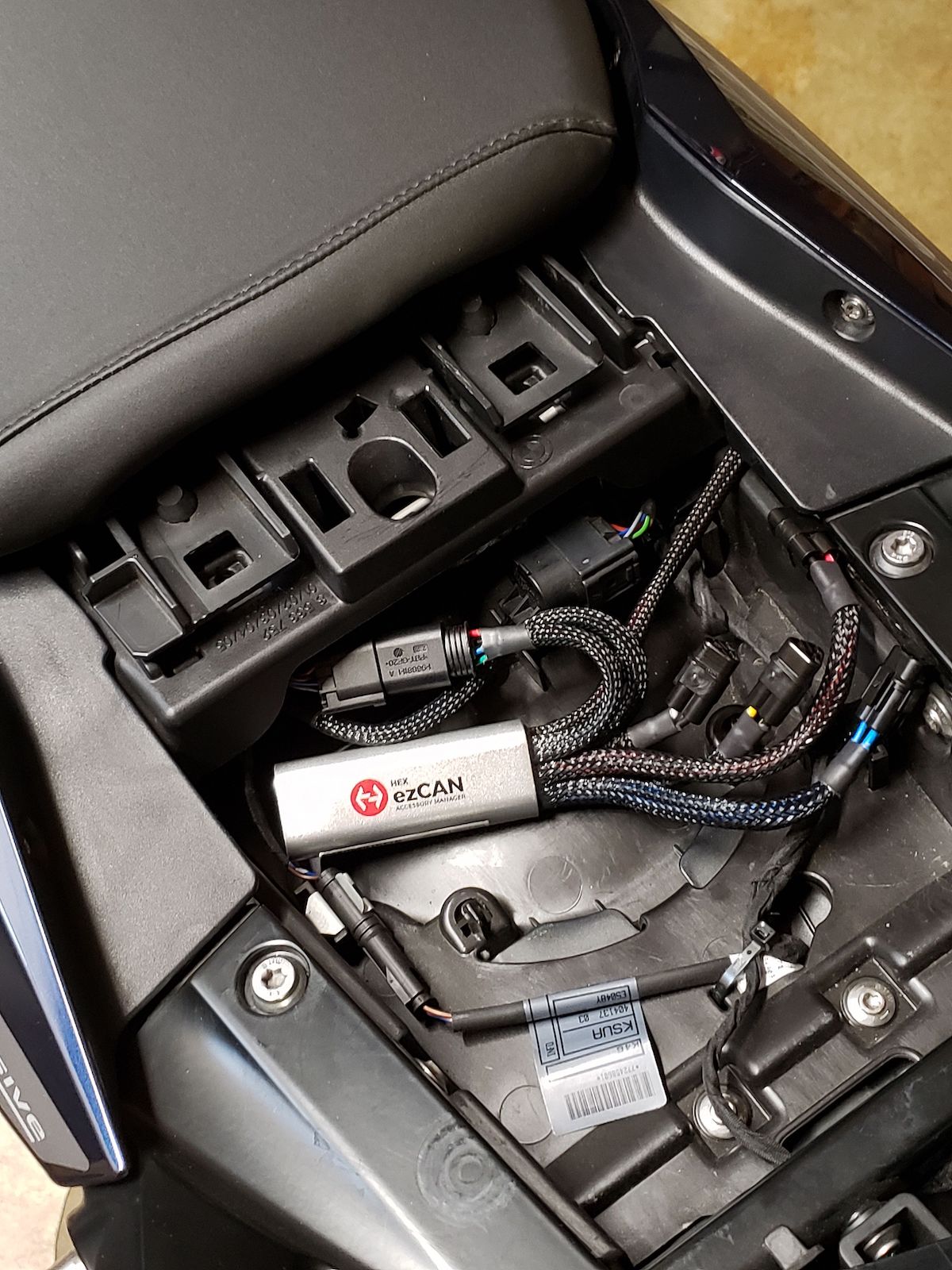
No written instructions are supplied in the package, but good step-by-step, bike-specific directions are available in text-plus-video form on the Hex (or Cyclops or Denali) website. The Hex-made guides, however, were created for the first-gen unit. While there’s no difference in the basic installation steps, some details have changed on the latest motorcycles (Denali has made at least some of the needed updates in their guides). On my 2020 R 1250 RS, the RDC module was not where the Hex/Cyclops instructions indicated (for liquid-cooled R 1200s), and my model wasn’t represented in the Denali illustrations for 1250s. I had to locate the RDC module on my own, using a hodgepodge of online resources, because tech support was closed when I did this installation. (Spoiler alert: If you have an R 1250 RS, look under the rear support for the front seat, left of center when facing forward.) Once I learned where to find my bike’s RDC, the rest of the process went without a hitch. Given the possibility your bike’s anatomy also may not exactly match what’s shown in the examples, you might need help locating your RDC or DWA module, too. Get such information ahead of time or be ready to call your dealer or tech support during installation. Bikes without an RDC module may still have the wiring harness branch for it and this can serve as the CAN bus access point for the ezCAN II.
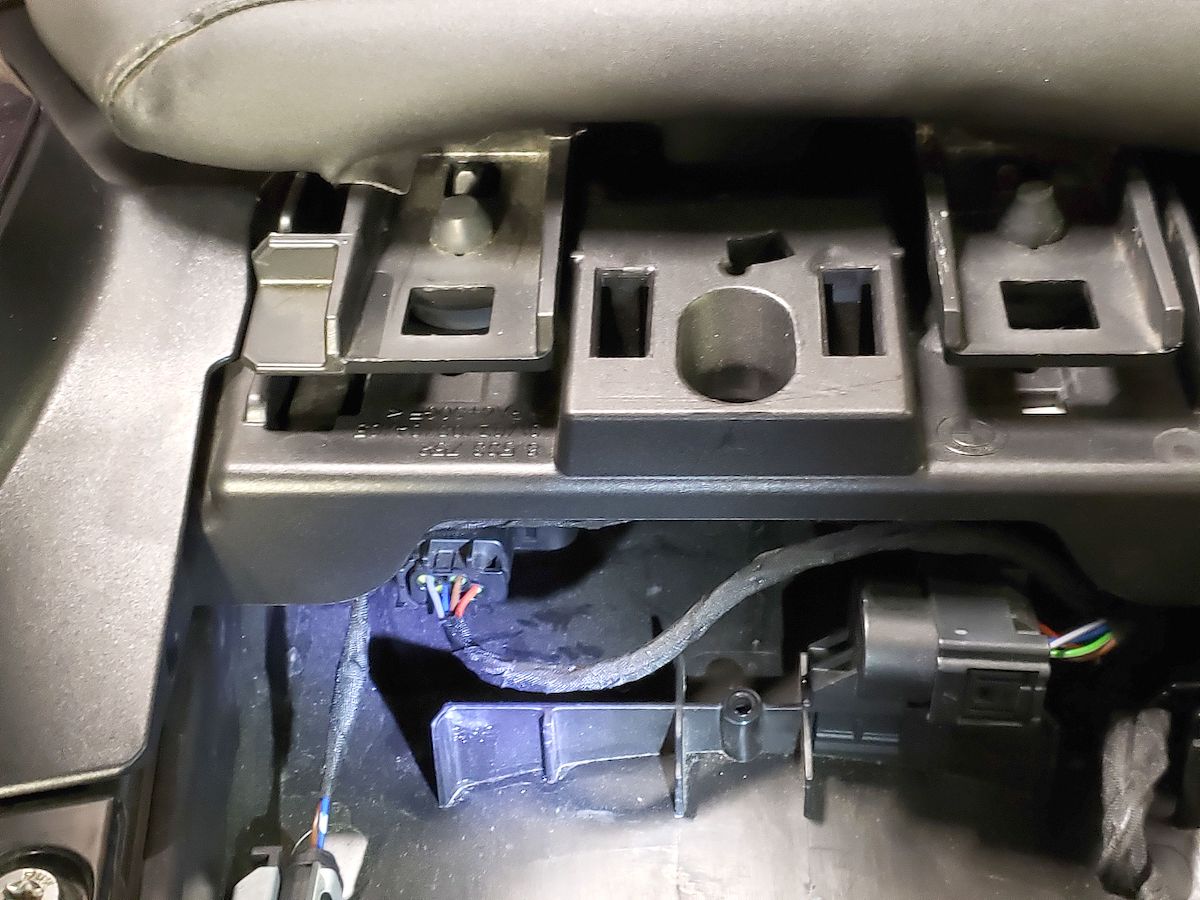
Priced at $195.95, the ezCAN II delivers extensive configurability and great convenience in a small package that’s safe for your bike, equipment, and warranty. Of course, there are ways to add accessories without integrating them into your bike’s CAN bus system, but those typically require running power straight off the battery with independently fused leads, tapping into your existing wiring harness with relays, and/or adding more switchgear to your handlebars or dash—plus the risk of pesky fault codes. Even if you used a basic power distribution module to avoid clutter at your battery terminals, you wouldn’t be able to program cunning functional enhancements, such as having your air horn activate only after a second or two of regular horn operation, allowing you to beep gently/briefly when you don’t want to blast someone with your full sonic capability, or dimming your auxiliary lights in fine increments using your WonderWheel.
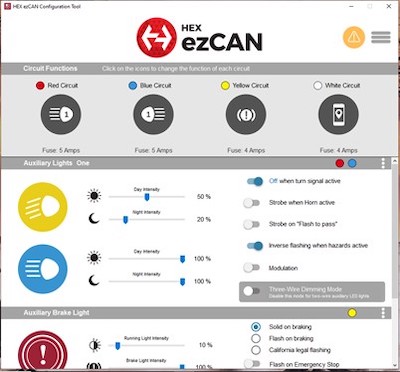
A wiring extension kit is available for an additional $59.00. It includes three long cables for reaching forward accessories and one short one for reaching an auxiliary brake light (all with that same robust braided insulation), shrink-wrap, and a large variety of connectors for custom setups. The ezCAN II and this kit can be ordered stateside from numerous aftermarket vendors. I got mine from accessory manufacturer/distributor Cyclops Adventure Sports, since I plan to install their Evolution turn signals and they supply pre-configured wiring for using these with the ezCAN II (for an additional charge of $39.95). It was simple to order the whole setup together, but another reason to buy from Cyclops is their reputation for excellent customer service and technical support.
While researching the ezCAN II, I discovered rumors of a gen-3 version circulating early last year. There was no such device. Hex did update the gen-2 unit to address some reliability issues with the previous iteration, and this was mistakenly referred to by some vendors as a gen-3. Hex has instructed its distributors to replace any ezCAN II units exhibiting the early problems with the updated version, irrespective of the two-year warranty period. (See the 4/6/21 post by Founder/CEO Stephan Theil for verification and details.)
If you notice similarities between the ezCAN II and Denali’s gen-2 CanSmart, it’s because they truly are identical (hardware and software for both are made by Hex). The Denali-branded setup is $59 more expensive, but for the extra cost it supplies users with four cables already set up with connectors for their other accessories (two for light pods, one for a horn, one for an auxiliary brake light). If you plan on using your “CAN opener” to manage a collection of Denali products, you might need to do a little connector assembling with the ezCAN II wiring extension kit, potentially requiring a couple of splitters (depending on how you want your auxiliary lights configured). The Hex-branded splitters are not readily available from US vendors; they’d have to be ordered from Hex in the UK or improvised. In other words, you’d end up spending the same or a bit more money and maybe doing a tad more work, so the CanSmart II would be the better alternative if you’re a big Denali fan. Keep an eye out for a Bluetooth dongle reportedly coming for the ezCAN II (and presumably compatible with the CanSmart II) that will allow management of the unit’s settings and updating of its firmware with a smartphone instead of requiring a laptop, USB link, and (for updates) a Wi-Fi connection.

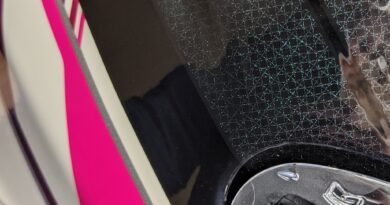
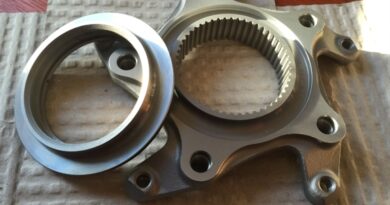
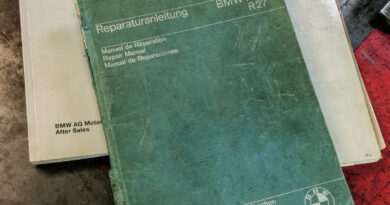
I’ve been running two heated gear ports, and two Aux for over a year and loving the product. I highly recommend the product. I had issues with my first one and worked with support to get a replacement, sure I had an issue, support took care of it and that is what sold me on the product.